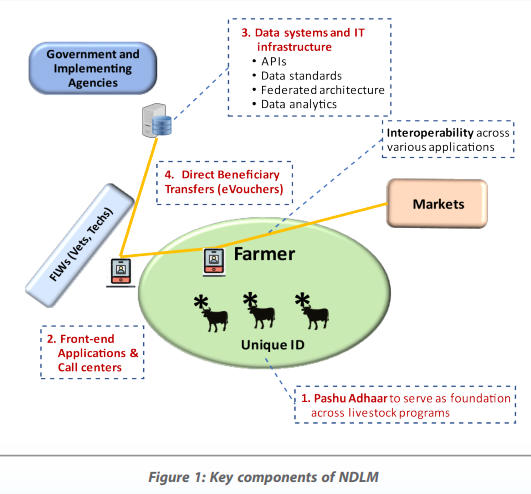Table of Contents
”UPSC Prelims Bits For Today” is every day published in the morning between 11:00 AM to 12:00 Noon and contains selective current affairs articles. ”UPSC Prelims Bits For Today” covers various topics from UPSC Prelims Syllabus and is very helpful and time managing for UPSC Aspirants. The framing of this daily current affairs compilation article is easy to read and understandable also.
In the ”UPSC Prelims Bits For Today” article, we focus on UPSC Preliminary exam-oriented current affairs covering various sections from leading National Newspapers, PIB, and other various official sources.
Lumpy skin disease
Lumpy skin disease: In News
- With the lumpy skin disease spreading fast among bovines in western and northern Rajasthan, cattle-rearers in the State are suffering heavy losses.
Lumpy skin disease: About LSD
- Lumpy skin disease (LSD) is a devastating disease of cattle and buffalo caused by a capripox virus.
- The disease is spreading rapidly internationally.
- LSD was first reported in Asia and the Pacific region in 2019 in north west China, Bangladesh and India.
- During 2020, LSD continued to spread across continental Asia with many countries including Bhutan, Hong Kong, Myanmar, Nepal, Taiwan, Vietnam and Sri Lanka, reporting outbreaks.
- In 2021, the disease was confirmed in Vietnam, Thailand, and Malaysia. Indonesia reported confirmed cases in March 2022.
- The World Organisation for Animal Health (the OIE) is encouraging members in at-risk areas to initiate vaccination campaigns ahead of virus entry and to continue timely reporting of all outbreaks.
Lumpy skin disease: How is the Virus Spread?
- It is not fully understood how lumpy skin disease virus is transmitted between animals. It is believed that arthropod vectors, direct contact, contaminated feed and water and iatrogenic means (for example, repeated use of needles on different animals) can all spread the disease.
- The virus is present in high concentrations in the skin nodules and scabs on affected animals and can be isolated from blood, saliva, ocular and nasal discharges and semen.
- Lumpy skin disease virus can be found in blood for up to 21 days post-infection but shedding in semen may continue for at least 42 days post-infection.
African Swine Fever
African Swine Fever: In News
Barely a week after about 500 pigs were culled in Kerala’s Wayanad district to prevent the spread of African swine fever detected there, new cases of the disease have been reported from there and Kannur.
African Swine Fever: What is it?
- African swine fever is a highly contagious and deadly viral disease affecting both domestic and feral swine of all ages.
- ASF is caused by the African swine fever virus (ASFV), a genetically complex virus belonging to the genus Asfivirus of the family Asfarviridae.
- ASF is not a threat to human health and cannot be transmitted from pigs to humans. It is not a food safety issue.
Why is African Swine Fever a Concern?
- ASF is a devastating, deadly disease that would have a significant impact on livestock producers, their communities and the economy.
- There is no treatment or vaccine available for this disease. The only way to stop this disease is to depopulate all affected or exposed swine herds.
National Digital Livestock Mission (NDLM)
In News
Department of Animal Husbandry and Dairying (DAHD) has set up a dedicated ‘One Health Unit’ in collaboration with the Gates Foundation. One of the primary focus areas of the unit has been on coming up with an “animal pandemic preparedness” model by creating a mechanism for storage and seamless exchange of data and information on livestock health — this will be implemented through the National Digital Livestock Mission (NDLM).
Why NDLM?
To create a farmer-centric, technology-enabled ecosystem where the farmers are able to realize better income through livestock activities with the right information and enabling infrastructure to obtain timely, high-quality services and access to markets as a result of well-functioning, connected systems that optimize for sustainable economic opportunities and health of both the animals and the people.
5G Spectrum Auction
5G Spectrum Auction: In News
1.5 In ₹ lakh crore, the worth of the 5G telecom spectrum sold in a seven-day auction.
5G Spectrum Auction: Key Points
- The mop-up from the 5G spectrum, capable of offering ultra-high speed mobile internet connectivity, is almost double the ₹77,815 crore worth of 4G airwaves sold last year and triple of ₹50,968 crore garnered from the 3G auction in 2010.
- Reliance Jio was the top bidder to the airwaves capable of offering speeds about 10 times faster than 4G. It was followed by Bharti Airtel and Vodafone Idea Ltd.
5G Spectrum Auction: What is Spectrum Auction?
- Devices such as cellphones and wireline telephones require signals to connect from one end to another. These signals are carried on airwaves, which must be sent at designated frequencies to avoid any kind of interference.
- The Union government owns all the publicly available assets within the geographical boundaries of the country, which also include airwaves. With the expansion in the number of cellphones, wireline telephone and internet users, the need to provide more space for the signals arises from time to time.
- To sell these assets to companies willing to set up the required infrastructure to transport these waves from one end to another, the central government through the DoT auctions these airwaves from time to time.
- These airwaves are called a spectrum, which is subdivided into bands which have varying frequencies. All these airwaves are sold for a certain period of time, after which their validity lapses, which is generally set at 20 years.




 TSPSC Group 1 Question Paper 2024, Downl...
TSPSC Group 1 Question Paper 2024, Downl...
 TSPSC Group 1 Answer key 2024 Out, Downl...
TSPSC Group 1 Answer key 2024 Out, Downl...
 UPSC Prelims 2024 Question Paper, Downlo...
UPSC Prelims 2024 Question Paper, Downlo...




